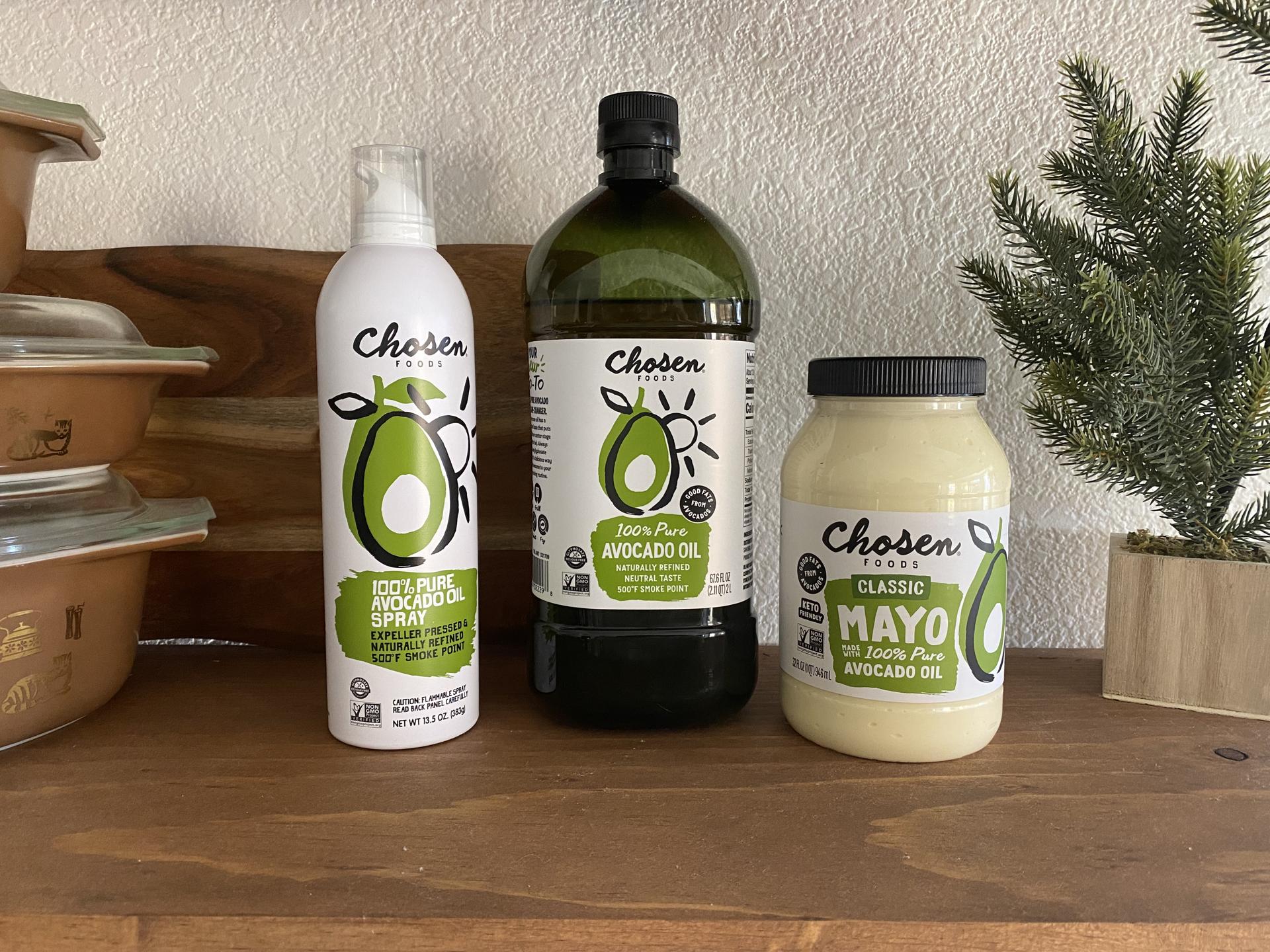Why I chose to limit seed oils.
This post contains affiliate links. If you use these links to buy something I may earn a small commission. See my full disclosure here.
Growing up, I ate plenty of seed oils. My mom made cakes as a hobby, so we went through so much Crisco. My grandma and aunt were also hard core supporters of the early 2000s fat-free movement, so their fridges were always stocked with products like margarine, so this, instead of butter or other natural fats, became the fat of choice in any recipe they could sneak it into.
Fast forward to after I had my first baby, and I, like so many other women, began having trouble with the gallbladder in the first months postpartum (not cool gallbladder. Not cool.). Three months after I had her, I had my gallbladder removed and my digestion has never been the same.
Don’t get me wrong, it was never great to begin with. I’ve always had irregular bowel movements and a sensitive stomach that would occasionally require me to rush to the bathroom a few minutes after consuming a particularly high fat meal, but nothing that required me to alter my life or be worried that I needed to plan ahead to make sure a bathroom would be around wherever I was, or abstain from eating if there wasn’t. But that is not my reality anymore.
Now, if I eat too many seed-oil-full meals in a row, and sometimes for no discernable reason, my body will come down with food poisoning like symptoms and I’ll be violently ill for days, sometimes throwing up, but always needing to stay only a few feet from a restroom which I will visit sometimes up to 20 times in a single day as my body tries to purge what I’ve consumed.
This had become a real problem. It was happening every couple months minimum and it seemed to be brought on, not only by eating a few meals in a row that I know were unhealthy (like a fast food burger and fry), but also when I would eat “healthy” (like salads and turkey wraps). I had to figure out what was going on.
I did a little research, and came across the idea of limiting or completely cutting out seed oils. Now, I’m not new to the world of health food, so I knew certain seed oils, like canola and vegetable oils, weren’t great for you, but I honestly didn’t think they were that big of a problem. But I was desperate. I know people who don’t have a gallbladder can struggle digesting large amounts of fat, so I guess it made sense that it would be extra challenging to digest such a high inflammatory fat, right?
So I decided to do a little experiment. I figured I would cut seed oils out of my life for 30 days to see what happened. Then, I would introduce them back in to verify things had really changed. I figured if it actually helped I could sustain cutting seed oils out of my life. It would be hard, but you choose your hard, and I would be choosing the hard of significantly limiting the convenience food I was eating in order to save myself 4 days of absolute misery every other month. Seemed like a fair trade to me.
I told my husband we were going to eat through the remaining food in our house that contained seed oil so we wouldn’t have to waste it if we did choose this new lifestyle. At the time, it was the middle of July, and I figured we could spend the next two weeks eating the small amount of seed oil food in our house and start August 1. Then I began looking at ingredient labels. Seed oils were in everything! I was shocked at the things seed oils were in that I would have never even considered. I mean coffee creamer? You can’t be serious. But there it was.
What I thought would take 2 weeks ended up taking 6. So finally, on September 1, we get started. That month, I didn’t eat any seed oils. I made my own buns, tortillas, and dressings, purchased seed-oil-free mayo, tortilla chips, and snacks, and learned how to make french fries in beef tallow (you didn’t really think I was going to give up french fries did you?). It was overwhelming at first, realizing that there are so many things you simply can’t buy at the store without consuming a seed oil, but once I got into it, it really wasn’t too bad.
And the results were exactly what I was hoping for. That month, I didn’t have any stomach problems! Even after eating the deep fried, beef-fat-full french fries! Yay! I was convinced I was onto something.
At the end of the month, I figured now was the time to finish testing my theory. That meant consuming a seed-oil-full meal that was more typical of my previous diet. So I got a burger and fries (that best seed-oil-full meal that exists), and it was not good. I felt truly awful. Immediately. So that sealed seed-oils’ fate for me. It’s been several months of trying to eat seed oil free, and while I’m not perfect, I probably eat something with a seed oil once or twice a month (they’re in everything remember), I’m generally able to avoid them.
This does mean I make most things, including all bread products and dressings, from scratch, and I almost never eat out, but for me it’s so worth it to feel good and be able to spend time with my kids playing instead of laying on the couch clutching my stomach between trips to the bathroom watching them play as was previously my frequent reality.
So is cutting out seed oil right for you? Only you can answer that, but if you decide it is, I hope this post can give you some helpful tips that will make that transition easier.
What is a seed oil?
To start, I am not a scientist, nor am I a doctor. I’m just a mama with a grumpy stomach trying to figure out how to make it less grumpy. So the information I provide here is pretty basic–enough to help you wrap your head around the concept. But always feel free to do your own independent research and decide what’s best for you and your family.
A seed oil is a cooking oil that comes from the seed of certain plants–like canola, sunflower, safflower, and soybean–rather than from the fruit of a plan–like avocado, olive, or coconut.
Seed oils can be obtained from those plant seeds through several different methods. The best one is when high pressure is used to extract the oils from the seed. However, sometimes chemicals are used to extract the oils. The extracted oils can then be bleached or have other preservatives added to them.
Seed oils I try to avoid include:
- Sunflower oil
- Corn oil
- Canola oil
- Cottonseed oil
- Soybean oil
- Safflower oil
- Grapeseed oil
- Rice Bran oil
- Peanut oil
- Also, any vegetable oil and vegetable shortening.
Non-seed oils/fats that I use include:
- Avocado oil
- Coconut oil
- Olive oil
- Beef tallow
- Lard
- Butter
- Ghee
Why should you avoid seed oils?
For starters, the FDA currently does not regulate the chemical–hexane–used to chemically extract seed oils from their plant. Consequently, it’s unknown how much of the chemical remains in the product after it is shipped to your local restaurant or grocery store.
Additionally, seed oils are high in omega-6 fatty acids. Many believe that to properly balance the body, a person should be consuming an equal amount of omega-3s with the omega-6s, which is something that historically, humans did.
How do I get started?
Again, if you’re not sure how you feel about the whole seed oil debate, I strongly recommend considering an experiment where you cut seed oil out of your life for a short period of time (say 30 days) then introduce it back in in a normal way (i.e. if you’re a frequent Chick-Fil-A patron, go grab a meal) and see how your body reacts. If you don’t feel better and aren’t otherwise convicted to cut-out or limit seed oils, then go back to your old way of doing things!
But if you are ready to give seed oils the boot, here’s the easiest way to do it. To start, you have to get comfortable reading labels. Even foods that advertise using olive or avocado oils or are from brand that generally produce high quality foods, often use seed oils. So always start with the label.
As you’re reading labels around your house, you may be surprised to find so many with seed oils listed. I know when I started, I knew I was going to have to cut out things like fast food and Doritos, but I never imagined there would be seed oil in my pancake mix! I’ve also found that sometimes different flavors of the same general products will have seed oils while others won’t. For example, the other day, I bought some pub cheese from the store. The original, seed-oil free, the horseradish flavor, seed-oil full. So even if you think it’s a safe product always check the label!
If you’re looking to ease into the transition, I recommend starting with the items that move the needle the most (consider this one of those situations where 20% effort can get you 80% of the results). Start by eliminating conventional dressing , foods fried in seed oils, and highly processed foods. These foods will have the highest amount of seed oil for each bite.
Let me explain. Conventional dressings are made almost entirely of seed oils plus some seasoning and a few other ingredients. That means if you’re eating 1/3 cup of dressing (which is not that hard to do on a big salad or dipping your order of fries) you’re basically eating 1/3 cup of seed oil. A batch of hamburger buns may also have 1/3 cup of seed oil in it. That 1/3 cup, though, is divided across 8 hamburger buns. That means if you eat one hamburger, you’re only eating 1/24 of a cup of seed oil. That means if you skip the dressing and only eat the hamburger bun, you’ll be eating roughly 87% less seed oil by making that one change (and to think, some people skip the burger and go straight for the salad).
If you want to take this approach and aren’t sure about what other foods will really help move the needle, you can also always pay attention to the order of the food label. The ingredients are listed in order of use. So the first ingredient is the most present ingredient in that particular food, and so on. If you find a food where a seed oil is listed in the first few ingredients, I would generally try to skip it.
This will mean you’ll need to buy or make some seed-oil free substitutions. I still haven’t found a store-bought hamburger bun that doesn’t contain seed oils, though there are some brands that do a great job of making healthier swaps for conventional seed-oil full items.
If you’re looking to purchase seed-oil free substitutions, here are some great brands to check out.
- Dressing, sauces, and mayo—Primal Kitchen or Chosen Foods. Dressings and mayo are also incredibly easy to make at home and are significantly cheaper that way.
- Chips—Siete, Boulder Canyon, or Thrive Market’s house brand (but note that only some of Boulder Canyon and Thrive Market’s products are seed-oil free)
- Tortillas—for flour tortillas I haven’t found a good store-bought alternative so I have to make them myself. But generally, corn tortillas are seed-oil free.
- Bread—bread products are some of the hardest to find seed oil free. I live on the West Coast, so I can find Boudin sourdough bread at my local store which is seed-oil free, but be diligent about checking labels until you find one. If you can’t find one, you may have to go with the homemade option.
- Buns—I haven’t found any brands that make hamburger or hotdog buns seed-oil free, so I generally make a big batch every couple months, freeze them, then thaw what I need, when I need it. This generally works pretty well. If you find a brand though, let me know.
- Peanut butter—conventional peanut butter has seed-oils, but you can easily get a brand, like Justin’s, that just contains peanuts and salt.
I know there are a lot of items to limit if you’re avoiding seed-oil, but there are also a lot of products that are naturally seed-oil free. Like:
- Meat (but be aware some pre-seasoned meats like chorizo may still contain seed-oils)
- Cheese
- Dairy products
- Pasta and pasta sauce
- Anything fresh like fruits and veggies (or the canned or frozen versions of them)
- Rice
- Beans
So when you’re starting, my tip is to focus on having more of the things you can have rather than limiting the things you can’t have. This makes it much easier.
You also may be thinking, “isn’t it really expensive to eat this way?” I mean come on, a dressing made with avocado oil is like $8. And that’s true. If you want to buy all your substitutions, you probably will see those items go up on your grocery bill.
If the budget’s what you’re worried about, here is my top tip: Start making the substitutions at home instead of buying them. Most swaps are pretty easy to make (especially once you’ve done it a time or two). If you’re not used to cooking from scratch, just start taking baby steps. Start by making your own dressing. I have a great recipe for seed-oil-free ranch. Once you’re comfortable with that, try making tortillas. Once that’s a snap, move on to burger buns. Remember the time will pass anyway, so don’t be discouraged if you feel like it’s taking a while to make all the swaps you want. One day it will be two years from now, and you can be closer to your goal or the same distance away.
Best tips for successfully limiting seed oils.
So, to summarize, if you want to limit seed oils,
- Start by cutting out or swapping the big-ticket items, like dressings and mayo.
- Start cooking as much as you can from home, and cooking from scratch as much as possible.
- Read food labels to familiarize yourself with what actually contains seed oils.
Remember, you may not cut seed oils completely out of your life overnight, but every healthy choice you make moves the needle forward. Progress over perfection. You can do this!
Love,
This mama



Leave a Reply